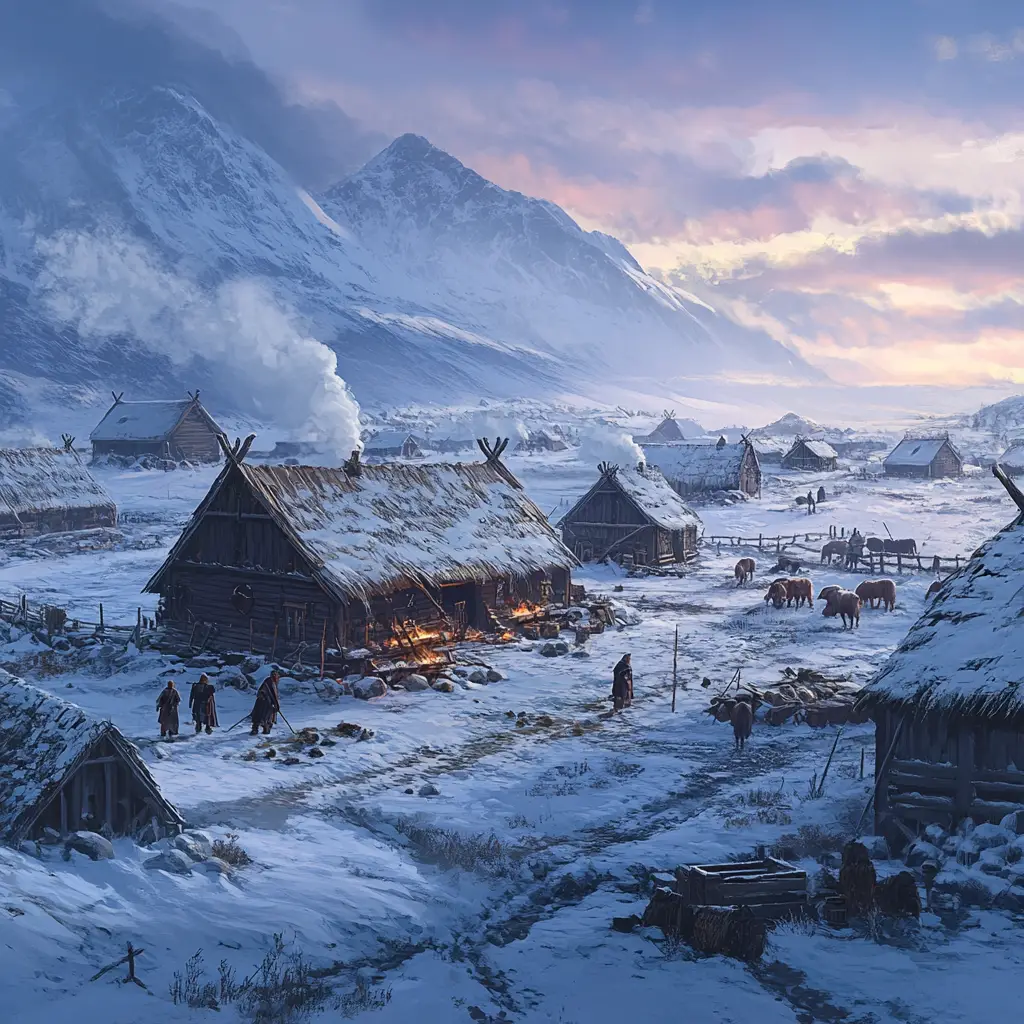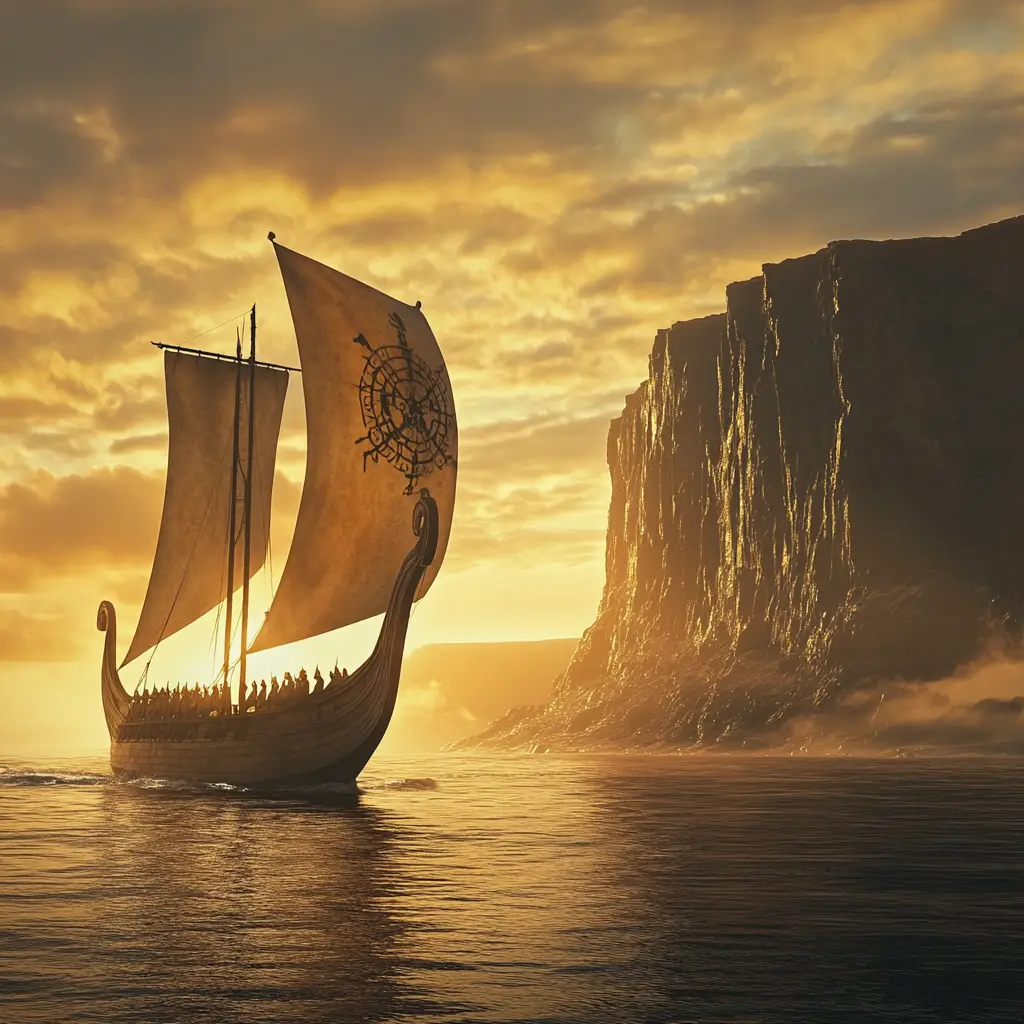The Background of Erik the Red
The first chapter of the Saga of the Greenlanders introduces Erik the Red, one of the most famous and influential figures in Norse exploration. The chapter sets the stage for Erik’s journey and his eventual establishment of a Norse settlement in Greenland, which would become a major part of the Viking Age’s expansion into the North Atlantic.
Erik the Red’s Exile from Iceland
Erik was born in Norway, but his family later moved to Iceland. As a young man, Erik became known for his temper and fierce nature, which would play a crucial role in the events that led to his exile. The saga explains that Erik was involved in a series of violent incidents in Iceland. Specifically, he killed a man named Eyjolf, and as a result, he was sentenced to exile from Iceland for three years.
This exile was a serious punishment, as being cast out from the community meant that Erik had to leave behind his family, property, and connections in Iceland. In Norse society, exile was considered a severe penalty because it not only stripped a person of their status but also meant that they had no protection from the laws of the land, and they could be vulnerable to attacks or violence.
Erik’s Decision to Seek New Lands
After being exiled from Iceland, Erik set out to find new lands. This was a common practice among the Norse, as they were skilled seafarers and explorers. Erik sailed westward from Iceland, seeking a new place to settle. His journey eventually led him to a vast and uncharted land — Greenland.
Erik’s voyage to Greenland is described as a momentous undertaking. The saga explains that he initially came upon a landmass that was far from the Icelandic coastline, a land that would come to be known as Greenland. Upon exploring the region, Erik discovered that it was suitable for settlement, with large areas of land, abundant resources, and fertile ground for farming. The coastlines were dotted with rich vegetation, and there were opportunities for hunting and fishing.
Naming Greenland
After exploring the land, Erik realised that he had discovered a significant opportunity for colonisation. But in order to attract settlers, he needed to give the new land a name that would entice people to follow him. According to the saga, Erik chose the name “Greenland” to make the land appear more inviting and promising. The name would suggest that it was a fertile and prosperous land, suitable for farming and settlement, despite the fact that parts of the island were harsh and icy.
Erik’s decision to name the land Greenland was part of his strategy to draw settlers from Iceland. The saga suggests that Erik was a shrewd and strategic thinker, using the appeal of the name to overcome any fears or hesitations that people in Iceland might have had about venturing into such a remote and unknown place.
Erik’s Return to Iceland
Once Erik had established Greenland as a potential settlement, he returned to Iceland to recruit settlers. His charisma and reputation as a strong leader helped him gather a group of followers, many of whom were also exiles or people looking for new opportunities. Erik’s reputation as a daring adventurer and his success in discovering new lands made him a powerful figure. The saga portrays him as a natural leader who could inspire loyalty and trust in his followers.
Erik’s return to Iceland is significant because it marks the beginning of the colonisation of Greenland. With a group of settlers, Erik set out again to Greenland, ready to establish a permanent Norse colony. This second voyage was a success, and Erik managed to establish the first permanent Norse settlements in Greenland, which would later become a key part of Norse history in the North Atlantic.
The Settlement of Greenland
The chapter ends with Erik’s successful establishment of the Greenland colony. After arriving back in Greenland, Erik led the settlers to establish two main settlements: one on the southern coast of the island, which came to be known as the Eastern Settlement, and another smaller one further to the west, known as the Western Settlement. These settlements became the foundation for the Norse presence in Greenland, which would last for several centuries.
Erik’s leadership was crucial in ensuring the success of the Greenland colony. His ability to rally settlers and his skill in managing the challenges of the harsh environment allowed the colony to thrive. The saga does not shy away from depicting Erik as a complex figure, who used both his strength and his cunning to shape his destiny and the future of Greenland.
Significance of the Chapter: The first chapter of the Saga of the Greenlanders is crucial because it sets the foundation for the story that follows. Erik the Red’s exiled past and his discovery of Greenland show the character traits of resilience, ambition, and leadership that would define the Viking Age. It also establishes the idea of exploration and colonisation, which is central to the saga. Erik’s boldness in naming Greenland and his successful establishment of a settlement would inspire future generations of Norse explorers, including his son Leif Eriksson, who would go on to discover Vinland.


